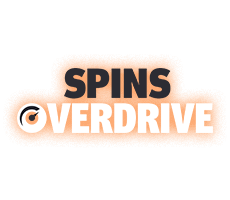How to play
Learn about implied odds in poker
Most players know that poker is a game with mathematics at its core. The game revolves around pot odds at the most basic of levels. Pot odds are the odds your bet offers an opponent to call or vice versa. Relying on pot odds will only get you so far, for reasons you are about to learn, so you need to delve into the world of implied odds in poker.
What are pot odds?
We must discuss pot odds before discussing implied odds because the two things are directly linked. Pot odds are the odds offered by the size of the current pot and how much it costs you to win that pot. You and your opponents have complete control over pot odds when playing No-Limit Hold'em and almost total control when playing games with a pot-limit betting structure.
Pot odds dictate whether your call is profitable or not. You should call a bet if the odds of improving to the best hand are greater than the pot odds offered. Conversely, you should not call a bet if the chance of improving to the best hand is less than the current pot odds.
For example, we are in a hand that has reached the turn and have an open-ended straight draw. It does not matter how we know, but let us pretend we know our opponent has an overpair to the board, meaning we must hit one of our straight outs to win the pot. The pot is $10, and our opponent bets $7.50. Should we call?
Working out the pot odds is our first port of call. It costs us $7.50 to win the $17.50 (the $10 pot and our opponent's $7.50 bet). Divide the total pot by the cost of calling, and you arrive at 2.33. The odds of hitting one of our eight open-ended straight draw outs on the river are 4.75. We should fold in this scenario because the pot odds are smaller than the odds of our hand improving.
What if our opponent only bet $2.50 into the $10 pot? It now costs us $2.50 to win $12.50, which are pot odds of 5-to-1. The pot odds are now greater than the chances of us improving our hand, meaning we have a profitable call.
What are implied pot odds?
It should be obvious that you would fold most draws if your opponent bets enough to reduce your pot odds to a level where calling a bet is not mathematically profitable. You will not get far in poker by continually folding draws just because pot odds dictate you should. This is where implied pot odds come into play.
Implied odds work by assuming your opponent will hand over more of their stack once you improve to the best hand. Implied pot odds are not an exact science, but it is essential to get into the habit of calculating them if you want to succeed at the poker tables.
Let us use our example from earlier, the one where we know our opponent has an overpair, and we have an open-ended straight draw. Again, the pot is $10, and our opponent bets $7.50, setting the pot odds at an unprofitable level to call. However, we know that our opponent likes to get married to his made hands, so he is likely to either bet on the river or call a bet when we improve to the best hand. How much more money do we need to extract to make our call profitable in lieu of correct pot odds?
The formula is [1/EQ)*C]-(P+C) where EQ is how often you improve to the winning hand (displayed as a decimal), C is how much you have to call right now, and P is the size of the pot after your opponent bets. Plugging our figures into that formula sees us arrive at $25.60. If we can win another $26 on the river, our call on the turn is profitable.
On the river, the pot will be $25, so we'd need to win a pot-sized bet to be mathematically profitable. If our opponent bet $5 on the turn instead, we'd only need to win another $14 to make our call profitable.
What are good implied odds and bad implied odds?
You may hear the term good or bad implied odds and wonder what they mean. PartyPoker is about to tell you. Imagine calling a preflop raise with 7h-6h, and the board falls As-8h-5c. You have an open-ended straight draw, which will be nicely disguised if you hit it on the turn or river. Furthermore, if your opponent has paired the ace, he is more likely to pay you off on future streets. These are good implied odds.
An example of bad implied odds would be finding yourself in a situation where you hold Ks-7s on a Qs-Jd-Td. Hitting a nine or ace improves you to a straight, but that would make the board extremely scary for your opponent, making them less likely to invest additional money into the pot.
What players are implied odds best against?
An opponent's approach to poker and their playing style significantly affects the implied odds offered. Tight-passive players are less likely to pay you off on future streets, so implied odds are less when this player type is involved.
Conversely, loose-aggressive players generally offer larger implied odds because they cannot stop betting! Of course, everyone plays poker differently, which is why you must remain observant and take notes on your opponents' tendencies to maximise your potential returns.
What are reverse implied odds in poker?
Reverse implied odds are the polar opposite of implied odds, referring to the money you may lose on future streets after calling a bet. This usually happens when you are drawing to a small flush or if a scare card pairs one of your cards.
For example, we are playing a game where we have reached a turn reading Kh-Th-6s-2c and hold 7h-5h. One player bets $7.50 into the $10 pot, and two other players call. Should we call with our baby flush? We will hit a flush on the river 19.5% of the time, and the pot odds of calling $7.50 to potentially win a $32.50 pot means we need 18.75% equity, so it is an easy call, right? Wrong! There is a very good chance that one of our three opponents is also on a flush draw, so hitting a heart on the river would improve us to a flush but one that is likely second-best and that requires us to call at least another bet. Those are your reverse implied odds.
The fundamental rules of implied odds in poker
Although it is impossible to calculate how much money you will make on future streets, you apply implied pot odds to your game. There fundamental rules for doing so are you can afford to call without correct pot odds if you have good implied odds, but you should stick to the pot odds if you have little to no implied odds.
Footer Content test slot
Practice with the help of our poker coach, Whizz, and improve your game!
Create Account
